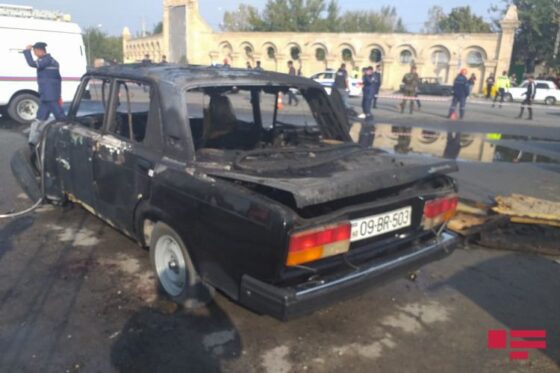
Widely-banned Russian-made cluster munitions have been fired by Armenian forces against residential areas in the town of Barda, Azerbaijan, according to VICE News.
VICE News journalists were able to corroborate the use of cluster munitions in an attack that took place on the 28th of October. In an investigation carried out just hours after the attack, we discovered and examined impacts and remnants of Smerch submunitions, which have been independently verified by Amnesty International’s military expert, Brian Castner, former UN military advisor, Marc Garlasco, and Justin Bronk, research fellow at the UK’s Royal United Services Institute defence think tank.
Yesterday (28 October 2020), at approximately 1.30pm local time, one or several Smerch rockets were fired into Barda, striking a residential neighbourhood close to a hospital. The Azerbaijani Prosecutor General’s Office has stated that at least 21 people were killed, with an estimated 70 more injured.
The team on the ground identified numerous impact site locations – including the grounds of a hospital and the yards of civilian houses – indicative of submunitions: small circular craters in the ground.
According to a firsthand tour of Barda’s main hospital morgues,the majority of bodies, which were dressed in civilian clothing, had missing limbs, burns on the skin and abdomens ripped open – all consistent with explosion and blast injuries.
Based on the information, Amnesty International has verified the use of banned cluster bombs by Armenia for the first time in the current Nagorno-Karabakh conflict, following an attack on the city of Barda in Azerbaijan.
“Amnesty International’s Crisis Response experts have identified weapons which struck a residential neighbourhood in the centre of Barda, a town in central Azerbaijan, on 28 October 2020 as Russian-manufactured 9N235 cluster munitions,” said Castner, Senior Crisis Advisor for arms and military operations at Amnesty International. “These were most likely delivered by 300mm ground-to-ground 9M55 Smerch rockets, which have a range of approximately 70km and are known to be in the possession of Armenian forces.”
